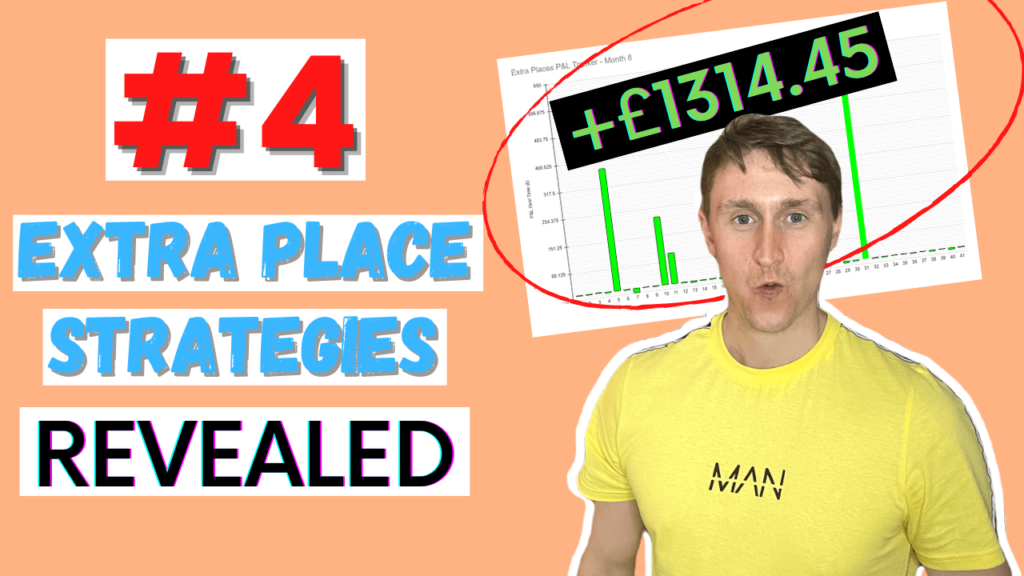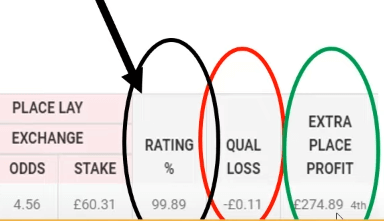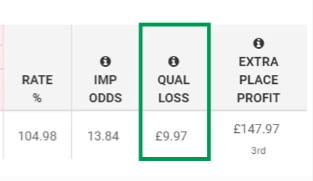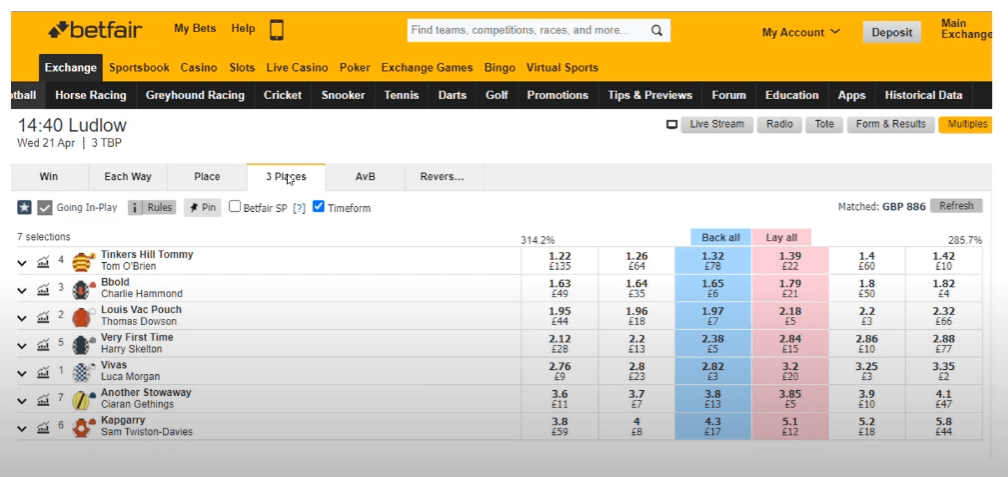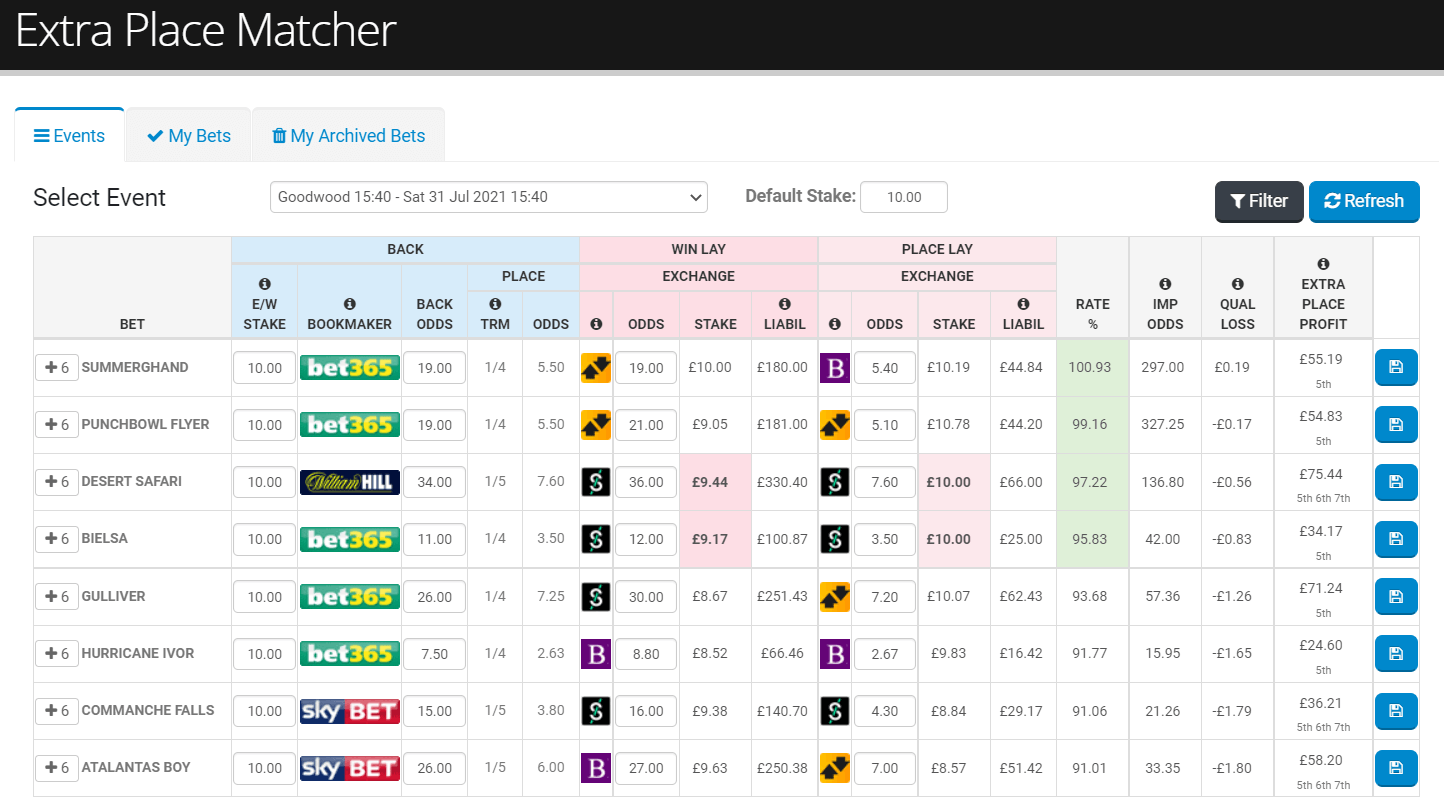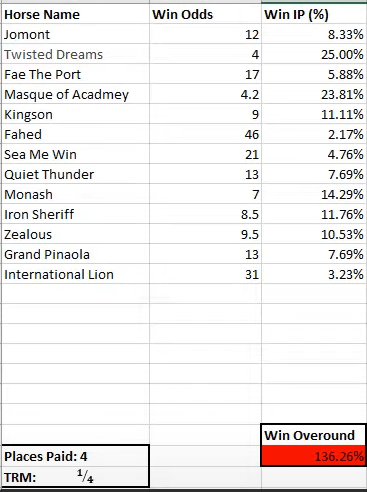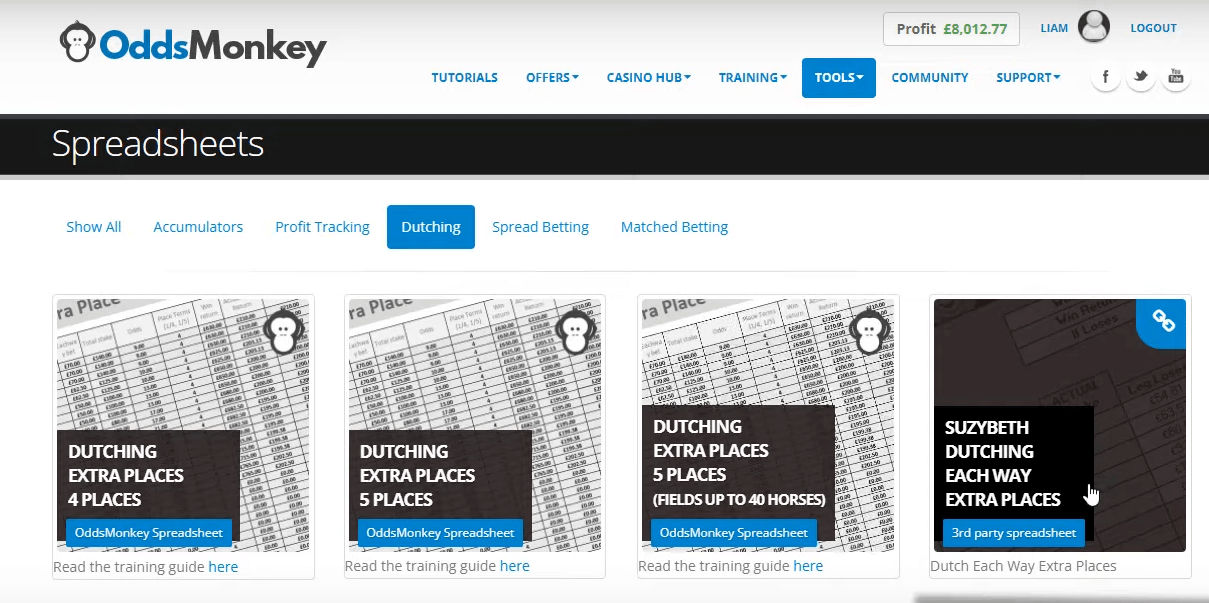This article will dive into the extra place offer in matched betting, this offer can be highly lucrative and some of my largest profits in the world of matched betting have come from the EP offer.
This guide will cover the top four extra place strategies that can be applied to horse races to lock in some big profits, each of the four strategies covered will target extra place races in a slightly different way although lots of the techniques will be similar.
Video Walkthrough
What Are Places?
Traditionally bookmakers payout on standard places on horse races that have more than four participants.
Places are essentially runner up positions which are specified by the bookmaker on their website.
Recreational punters may decide to opt-in and cover more positions than just the win with their bet.
If a punter decides to back up their bet with some runner up positions, they are required to select a small checkbox on their bet slip entitled E/W (each way).
Once selecting the checkbox, the punter’s stake would be doubled down, half on the horse to win and the other half on the horse to finish in a place. For example, a £5 stake becomes a £10 stake and a £20 stake becomes a £40 stake.
It’s important to note that bookmakers class the first position (the winner) as a place.
Learn More About Places And Extra Places Here…
What Are Extra Places?
Like most things in matched betting, extra places are a promotion run by bookmakers that can be exploited for large profits! As touched on, bookmakers payout on standard places on horse races that have more than four participants.
Below, is a list of the standard places that bookmakers offer along with the fraction of the back odds that the bookmakers provide for those places.
Runners | Standard Places | Place Terms |
2-4 Runners | N/A | N/A |
5-7 Runners | 2 Places | 1/4 |
8+ Runners | 3 Places | 1/5 |
16+ Runner Handicaps | 4 Places | 1/4 |
In certain races, bookmarks may decide to enhance the number of places they payout on in order to entice their core audience to continue to pump money into their books.
For example, in a race with ten runners, the bookmaker may decide to pay out on an extra place making the total number of places being offered by the bookmaker four as opposed to the initial three. Extra places can be used as an edge in matched betting to lock in some nice profits!
Targeting The Extra Place
Strategy one is the most common and most popular method of doing extra places, this strategy is the positive EV strategy, commonly known as targeting the extra place.
Example Of Me Earning Just Over £400 Using This Strategy
This technique is the easiest and the fastest to complete, however, it has the lowest strike rate of the four extra place strategies.
This strategy relies on covering a small number of horses in the race, this is done by backing each horse that you are looking to cover win and E/W with the bookmaker, placing a lay bet on the win market on the exchange for each of the horses you are targeting and finally placing a lay bet on the place market on any horse that you target also on the betting exchange.
The second lay bet used on the place market on the betting exchange covers the standard amount of places that are traditionally paid by bookmakers, in our example, this is three. Whereas your each-way bet with the bookmaker covers the additional extra place position 4th, along with the traditional standard places.
This strategy results in a profit when a horse you are targeting lands in an extra place that is covered by the bookmaker but not covered by the traditional amount of places on the betting exchange.
With this procedure you should aim for high matches using OddsMonkeys extra place matcher, this, in turn, will result in small qualifying losses and large extra place profits should your targeted horse or horses land within an extra place position.
Highlighted in the image above, the red circle shows an 11p qualifying loss, this is really good as the potential loss is very small in relation to the potential extra place profit which is highlighted in the green circle.
In the example displayed in the image, if the horse covered lands in fourth place I will make a profit of just short of £275 but if not and it lands in any other position, I will take a qualifying loss of just 11p.
Arbing The Place Market
Strategy two is arbing, this technique is often overlooked by many matched bettors as the profits are generally small and consistent as opposed to large and inconsistent like with strategy one. Applying this technique is great when high match ratings aren’t available on the extra place matcher for strategy one.
Video Walkthrough
When arbing the place market, you are taking value from the exchange and their place market as opposed to traditional arbing where the value comes from bookmakers offering out value prices.
As your taking value from the exchange and not the bookmaker, this form of arbing is safe to do and won’t result in fast restrictions on your bookmaker accounts. Arbing the place market works by taking ratings that are above 100% on the extra place matcher.
Any rating above 100% will result in a profit, however, there is a catch!
A Rating Of 105% securing a £10 Guaranteed Profit
It’s important to ensure that the win back odds that you get with the bookmaker are shorter than the win lay odds you get with the betting exchange with each horse you target with the arbing strategy.
Doing this will keep the bookmaker happy as you are not taking value prices with them. The value and the arb is derived from laying off the place bet in a different place market that has shorter odds.
For example, with strategy one, if a bookie was paying out on four places boosted from the traditional three places, you would lay in the traditional three-place market on Betfair and hope to see your horse lands in fourth for the big profit.
Betfair also has other place markets which you have the option to use when your matched betting.
Various Place Markets Displayed Across The Market Navigation Menu On Betfair
If we are to take advantage of Betfair’s four-place market as opposed to the three-place market we are able to snap up some much shorter odds.
If you use your place lay bet in a higher place market (generally the same amount of places that the bookmaker is paying out on including their additional extra place), in many cases, this will provide a rating of above 100% on the extra place matcher, this, of course, is an arb.
The odds are shorter in the higher place market as a result of the horse having more of a chance of landing in the specified places, for example, a horse is much more likely to land in the first four places as opposed to landing in the first three places, as a result of this the odds are shorter in the four-place market, this is where the arb comes from.
Two downsides to the arbing strategy are the fact that you will cover all the possible outcomes with your three bets, your win and each-way back bet with the bookmaker covers the same amount of places as the win lay bet and the place lay bet on the betting exchange Betfair or Smarkets.
The second downside is that you will be limited to the amount of liquidity on offer in the additional place markets on Betfair, the bigger the race the more liquidity, however, the standard place market will always be the most liquid place market on the exchange.
So if the horse was to land in the extra place you wouldn’t hit a huge profit, but as your place bet was used in the higher place market which provided the arb you would simply guarantee a small profit across all the runners in the race regardless of what happens.
Covering The Field
Strategy three is covering the field, this strategy can only be implemented where there are lots of high match ratings above 95% on the extra place matcher throughout the day.
Video Walkthrough
This strategy is great and is beloved by many experienced matched bettors as it allows you to lock in very large guaranteed profits before the horse races even start.
The fundamentals of this strategy are the same as strategy one but this time you simply repeat strategy one across every horse within the race.
As touched on, it isn’t possible to do this on every single horse race and it’s only going to be profitable at extremely high profile races and meetings such as each year at the Cheltenham festival.
Matches On Lots Of Different Horses Highlighted In Green Throughout The Day Is Required For This Strategy To Be Profitable
The idea behind this strategy is to target every horse in the race ensuring that you have really small qualifying losses across each of the runners, it’s highly recommended to use various bookmaker accounts and to cover no more horses than the number of places that each bookmaker is paying out on, this will help you to remain under the radar as much as possible and prevent gubbings.
It’s very important that you are certain that you will be able to lock in a guaranteed profit before committing to this strategy, to do this, you must confirm that the smallest potential profit that you can take from one of the horses landing in the extra place is larger than the total accumulative qualifying loss across all the horses you have covered.
To expand on this, each time you cover a horse by backing the win and each way with the bookmaker, laying off the win on the betting exchange and laying off the place also on the exchange you are likely to take a small qualifying loss.
Each of your qualifying losses added together from targeting every single runner in the race must not exceed the smallest potential extra place profit that you have on any one of the runners.
For example, if your total QL was £103 and the smallest potential profit you could score for a horse landing in the extra place was £95 there is a chance that money could be lost, granted another horse with a large EP profit could land in the extra place but this, of course, relies on taking risk and if you’re not able to quantify the expected value it isn’t recommended to take to many risks on your downside.
Dutching The Place Market
Strategy four has a lot of similarities to the third strategy, the fourth and final technique used to lock in some big profits from the extra place promotion is called dutching.
Video Walkthrough
Dutching is one of the only matched betting strategies which doesn’t involve the use of lay bets and a betting exchange. Instead, this technique is completed exclusively by placing back bets with bookmakers.
As the concept is simple and requires very little effort it’s commonly regarded as many matched bettors favourite EP strategy.
When implementing the E/W dutching strategy you should target races that meet very specific criteria.
You should target races that have a very small overround figure, as close to 100% as possible.
Convert the decimal odds across all the horses to implied probability and add all the percentages up to provide you with this figure.
Win Overround For a Race At Newcastle
You should also look to target races with bookmakers paying out on as many extra places as possible whilst they maintain their ¼ odds terms on the place payout.
Using a free spreadsheet accessible for OddsMonkey premium members, you should enter all the necessary information such as the win back odds with each horse respectively, the place terms on each runner and your desired approximate return on each of the horses landing in a place whether that be a standard place or an extra place.
Download The 4 or 5 Place Dutching Sheet Here
After entering all the required information the spreadsheet will populate two boxes in the upper right-hand corner, the lowest return and highest return boxes.
If the lowest return shows a total larger than £0, this represents the fact that you will be able to guarantee a non-fixed profit by implementing the dutching strategy.
The final profit when using the each way dutching strategy will be somewhere in between the lowest return figure and the highest return figure.
In most races, there will be some form of downside in your lowest return box, there are exceptions to this where the race will provide you with a guaranteed profit such as at festivals like Cheltenham but for the most part, there will be a downside.
For this reason, you must ensure that your downside is very small in relation to your upside, you can do this by targeting races that fall into the criteria specified earlier.

